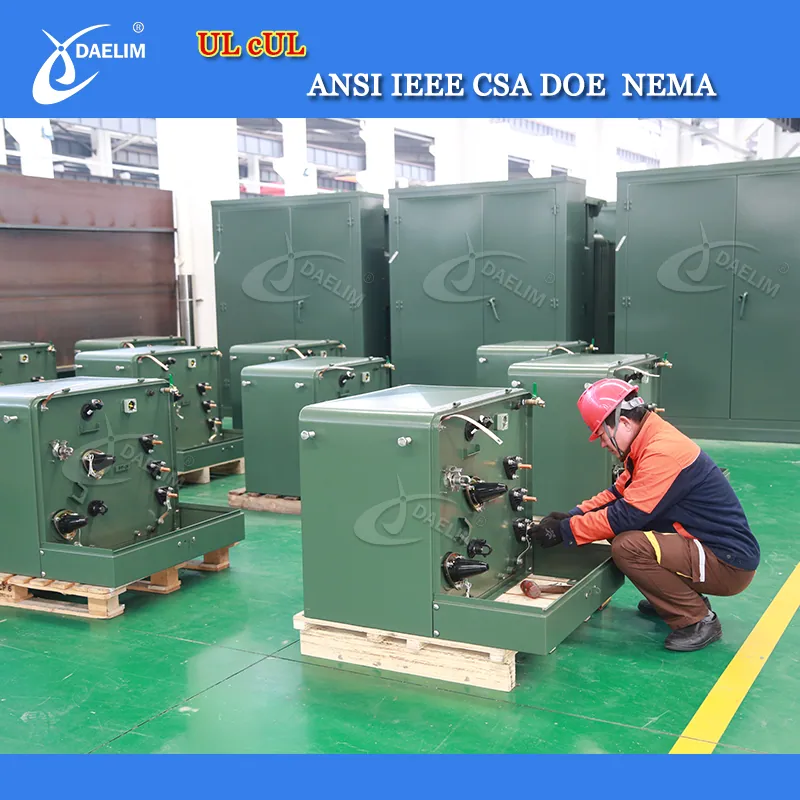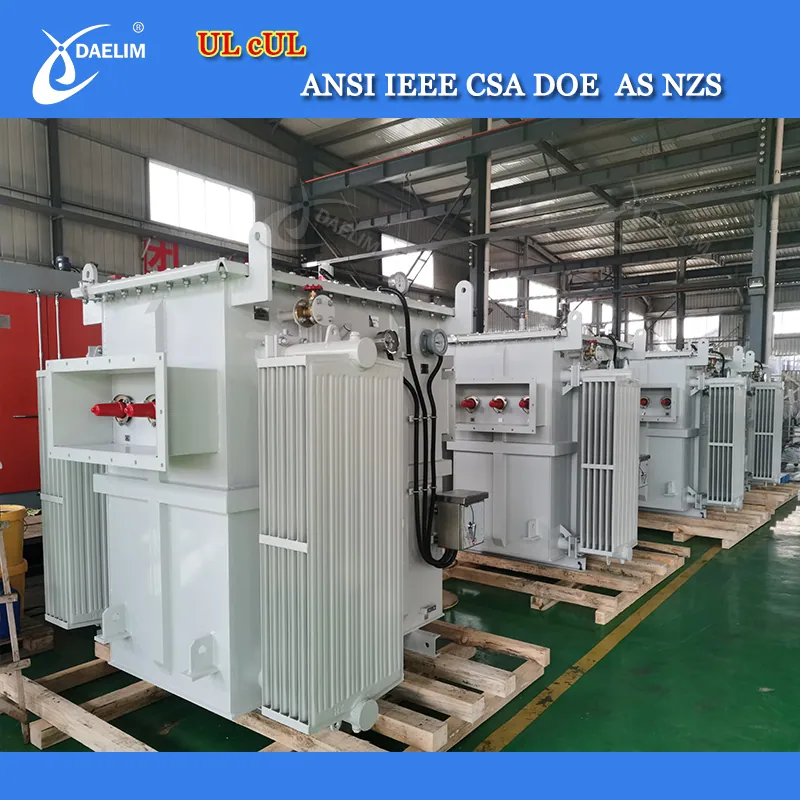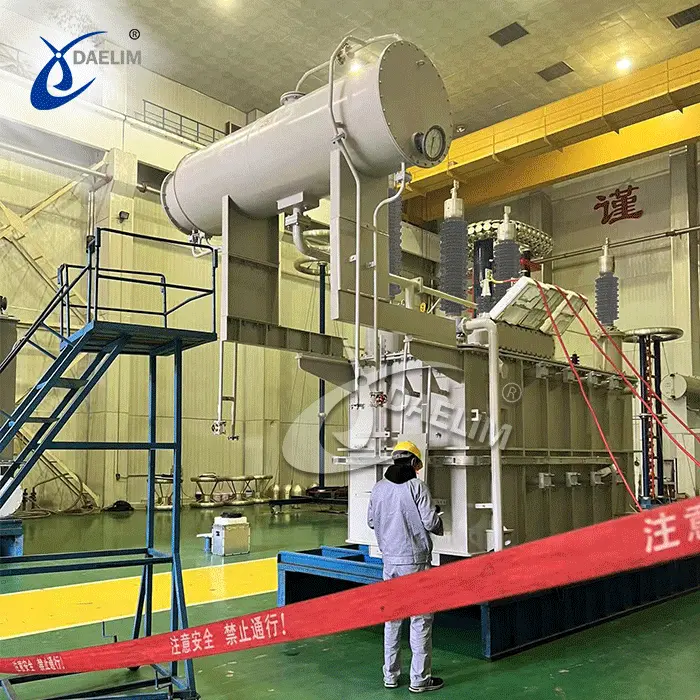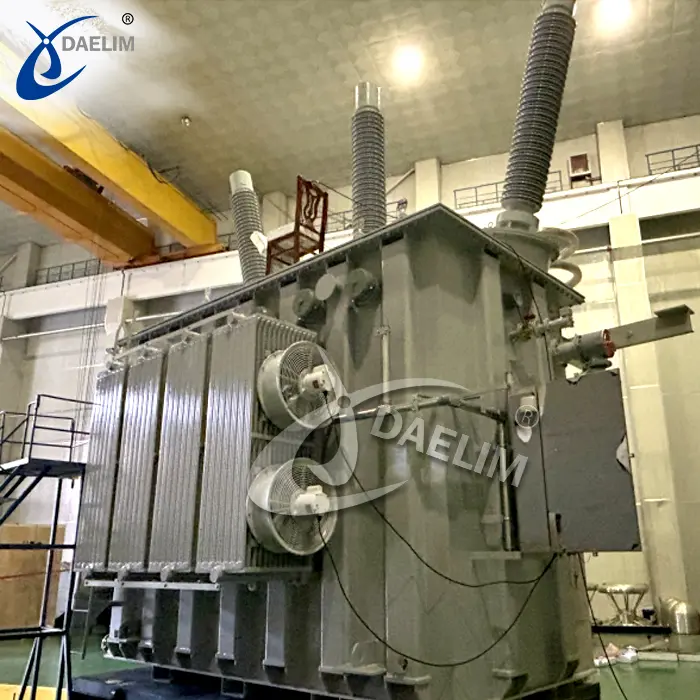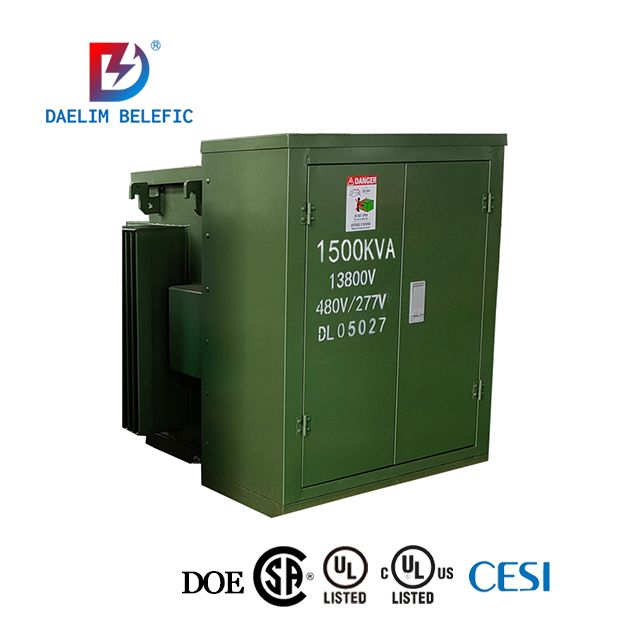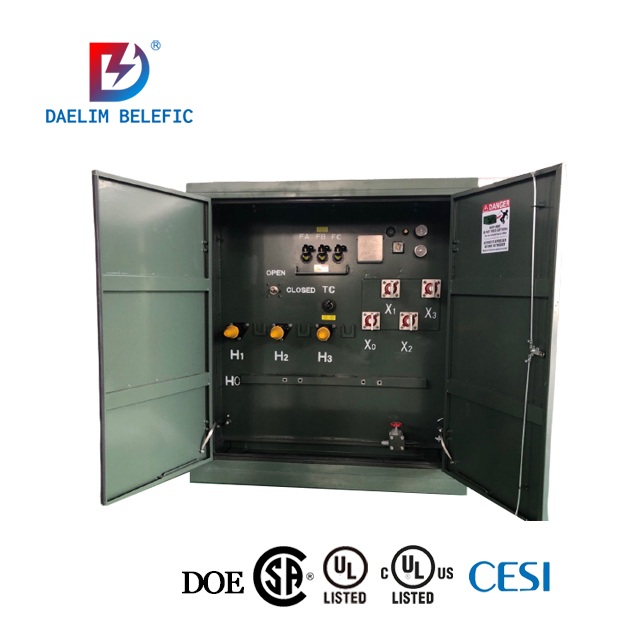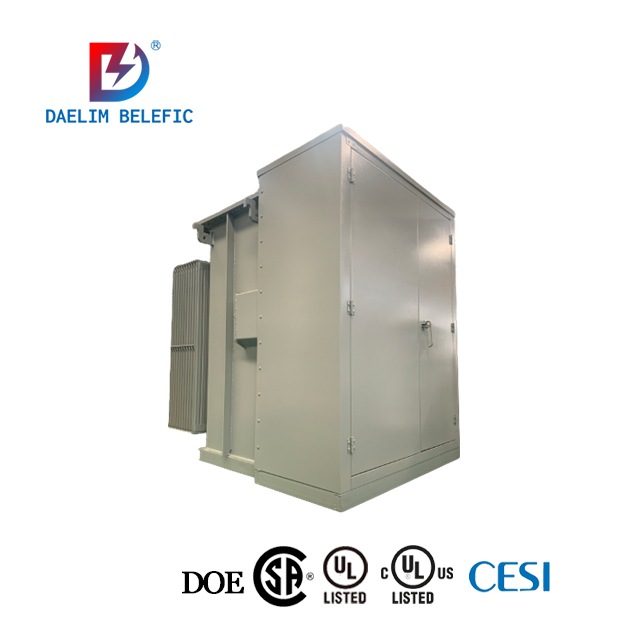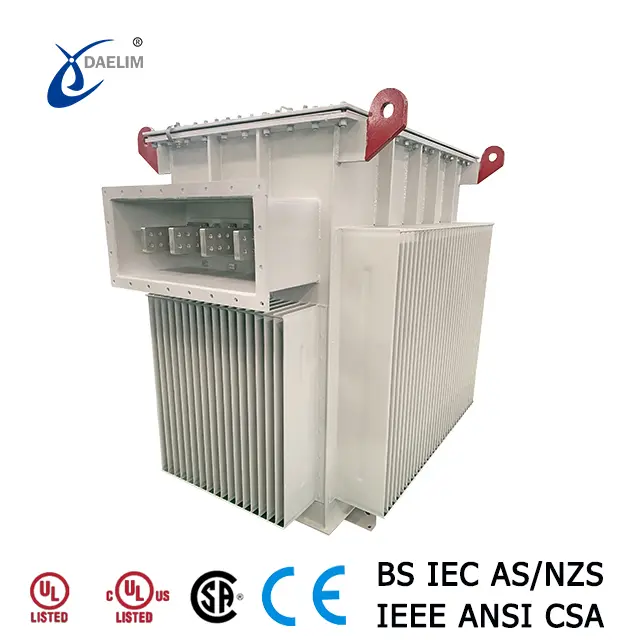The Crucial Role of Transformers in the Renewable Energy Era
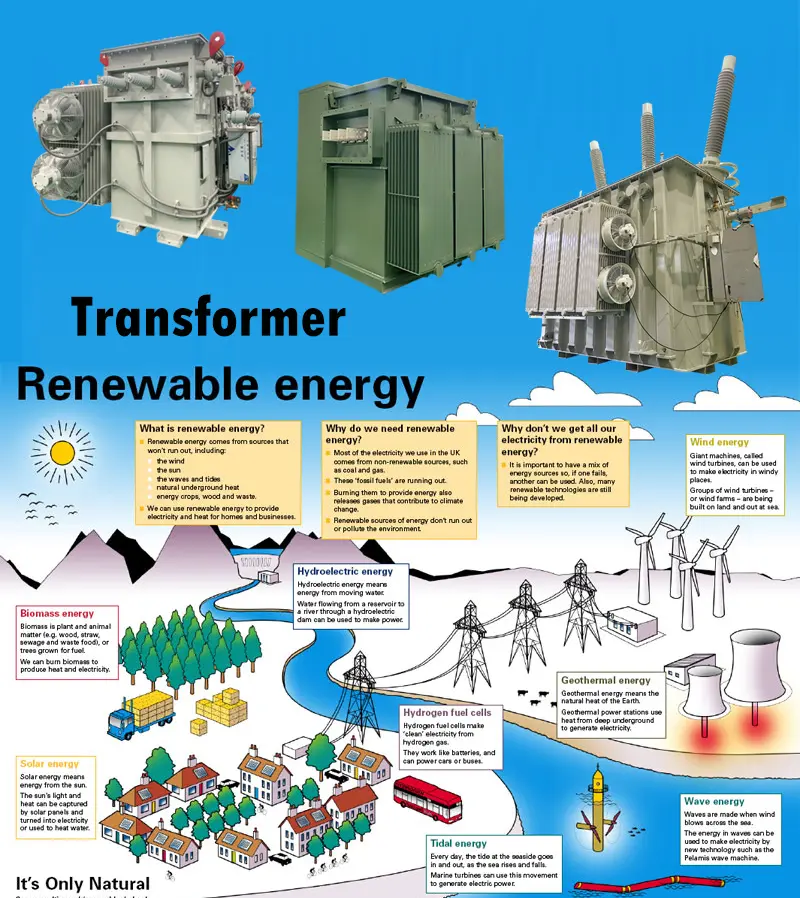
With the adoption of the Paris Agreement in 2015 and the urgent need to reduce greenhouse gas emissions, the global shift towards renewable energy is reshaping the landscape of the energy industry. In this transformative journey, transformers emerge as pivotal components connecting power generation to the grid, playing a vital role. This article delves into the applications and latest technological innovations of transformers in the field of renewable energy.
As a global transformer supplier, Daelim Transformer is actively engaged in innovation and research to contribute to the renewable energy sector, offering HV power transformers, distribution transformers, and cast resin transformers known for high efficiency, longevity, and environmental friendliness. The company's intelligent transformers incorporate advanced voltage optimization technology, reducing losses and extending the lifespan of electrical equipment. Additionally, they enable real-time monitoring for precise energy-saving measures, seamlessly integrating into grid systems.
Contact Daelim TransformerBasic Functions of Transformers:
 The primary function of transformers is to adjust the voltage to meet the demands of transmission and distribution. In renewable energy systems, transformers need to adapt to irregular energy inputs from sources such as solar and wind, which fluctuate with weather conditions and time.
The primary function of transformers is to adjust the voltage to meet the demands of transmission and distribution. In renewable energy systems, transformers need to adapt to irregular energy inputs from sources such as solar and wind, which fluctuate with weather conditions and time.
Requirements for Transformers in Renewable Energy Systems:
High Efficiency: Renewable energy systems demand transformers with higher efficiency to maximize the utilization of generated power.
Environmental Resilience: Transformers must withstand harsh environmental conditions, such as high temperatures and humidity, prevalent in solar and wind power generation fields.
Adjustability: Transformers need to be adaptable to fluctuations in energy output, ensuring grid stability.
Learn more about renewable transformers: Daelim Transformers Solution For Renewable Power Plant
Innovative Technologies:
Smart Transformers: These transformers monitor energy output and grid demands in real-time, automatically adjusting performance to optimize power transmission.
Dry Type Transformers: Utilizing solid-state components instead of traditional mechanical structures, these transformers are smaller, lighter, and more efficient, making them suitable for renewable energy systems.
Learn more about dry type transformers: Ultimate guide of cast resin dry type transformer
Environmentally Friendly Materials: A new generation of transformers incorporates biodegradable cooling fluids and eco-friendly materials, minimizing environmental impact.
Special Requirements for Transformers in Renewable Energy:
Challenges and demands faced by transformers in renewable energy scenarios differ from traditional energy systems. Due to the intermittent nature of renewable sources like wind and solar, transformers must possess greater adaptability and flexibility. For instance, in wind power generation, fluctuations in wind speed require transformers to rapidly respond to maintain grid stability. Similarly, in solar power generation, cloud cover may cause sudden drops in power output, necessitating effective management of these short-term fluctuations.
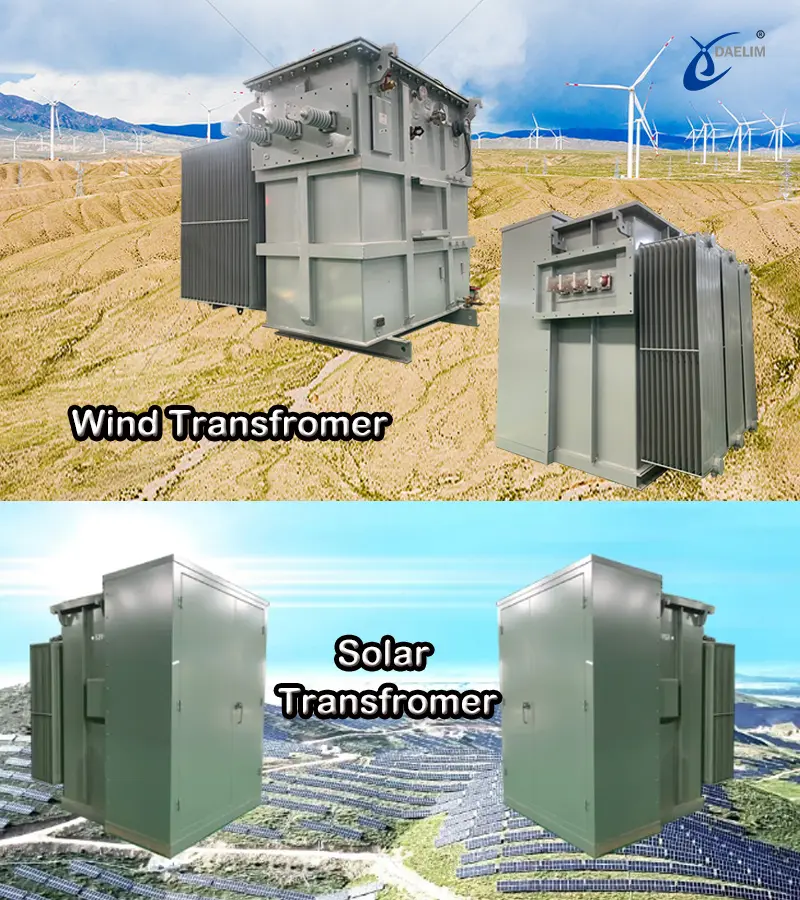
Wind Power Transformer Applications
Transformers play a crucial role in converting low-voltage electricity generated by wind turbines into high-voltage electricity suitable for long-distance transmission. Smart transformers are instrumental here, automatically adjusting voltage based on wind speed changes to ensure a stable power output.
Learn more: FAQ Guide to Wind Transformers-Daelim
Solar Power Transformer Applications
In solar power plants, transformers convert direct current (DC) to alternating current (AC) and adjust voltage for grid usage. Solid-state transformers are particularly popular in solar plants due to their compact size, high efficiency, and better adaptability to fluctuations in solar panel output. Pad-mounted transformers are commonly seen in solar plants in North America, providing a stable and reliable power supply.
Solar Power Transformer SolutionEnvironmental Adaptability of Transformers
As renewable energy projects increasingly deploy in harsh environments such as offshore wind farms or solar plants in deserts, the environmental adaptability of transformers becomes crucial. Modern transformer designs incorporate highly corrosion-resistant materials and advanced cooling systems to ensure stable operation even in extreme conditions.
Integration Challenges
In renewable energy systems, transformers not only need to seamlessly integrate with traditional grids but also must be compatible with various emerging technologies, including energy storage systems and smart grid technologies. This requires transformer manufacturers to consider broader system compatibility and interoperability during the design phase.
Get Price
Environmental Sustainability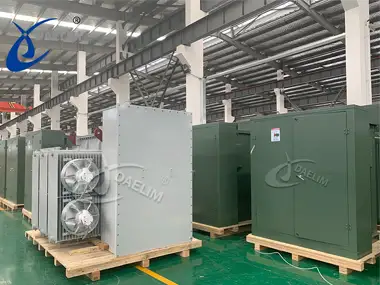
With growing environmental awareness, the environmental impact and sustainability of transformers have come under increased scrutiny. The next generation of transformers is adopting more eco-friendly materials, such as biodegradable cooling fluids and recyclable components. Moreover, the manufacturing process of transformers is evolving towards lower carbon emissions and higher energy efficiency.
Future Directions
Looking ahead, transformer technology will continue to innovate around enhancing efficiency, improving adjustability, and increasing environmental adaptability. With the development of digitalization and the Internet of Things (IoT), smart transformers will be able to respond more precisely to changes in grid demands and energy output. Additionally, advancements in new materials and manufacturing technologies may further reduce the size and weight of transformers, making them more suitable for distributed energy systems and small-scale renewable energy projects.
Europe's Power Grid Upgrade
As 40% of continental Europe's distribution network exceeds 40 years, and many transformers fall short of EU standards, the power grid requires a comprehensive upgrade to accommodate increasing electricity from renewable sources.
Conclusion
As a critical link connecting renewable energy sources to the grid, transformers play an indispensable role in driving the transition to sustainable energy. With ongoing technological innovations, future transformers will be smarter, more efficient, and environmentally friendly, providing robust support for the global shift toward green energy. For transformer manufacturers and the power industry, staying abreast of these transformations and investing in relevant research and development will be key to seizing future market opportunities.
Embark on a sustainable journey with Daelim Transformer as your reliable ally in renewable energy initiatives. By choosing Daelim Transformer, you not only gain a partner in excellence but also make a meaningful contribution to reducing carbon emissions. Together, let's build a cleaner and greener future.
Contact Daelim Transformer
